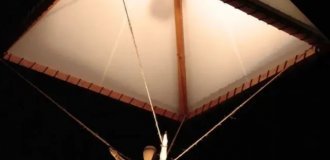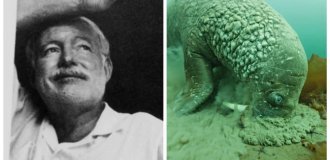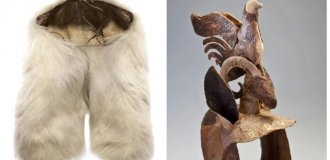The loneliest uninhabited island in the world and its mysteries (6 photos)
Since the last century, there have been no “nobody’s” places left on Earth. All pieces of land, even located thousands of kilometers from the mainland, belong to someone. So Bouvet Island, nestled alone on the southern edge of the Atlantic Ocean, is considered Norwegian. It would seem that where is Norway and where is the south of the Atlantic, but the fact remains that this northern country owns the loneliest uninhabited island in the world. 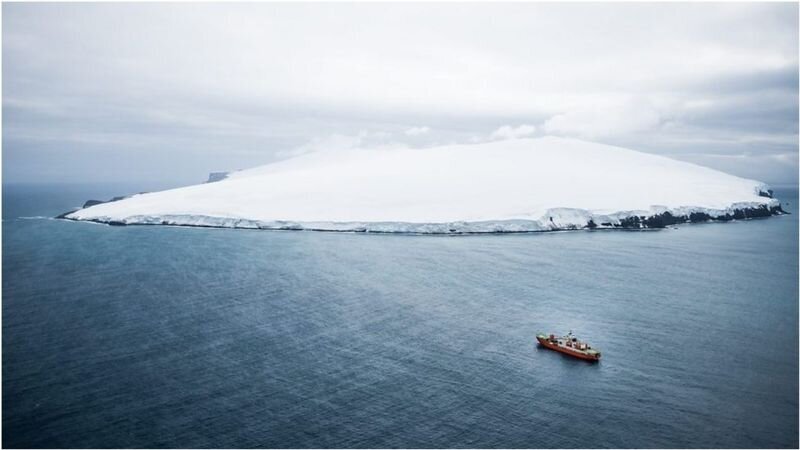
Bouvet Island
Volcano Child
The ice oval covered with eternal snow has been called “the loneliest” by polar explorers who periodically land on it. And all because Bouvet is located at a distance of more than a thousand kilometers from the continents. It is 2,500 km from Africa, 1,700 km from Antarctica, and 4,000 km from South America. Even its closest island neighbor is located more than one and a half thousand kilometers away. Bouvet has competitors - Easter Island or Tristan da Cunha. But all these places are inhabited and suitable for life. But this icy piece of land in its entire history has seen only a few hundred people who were able to land on its inhospitable shores.
This is quite difficult to do. Bouvet is the surface part of a huge volcano, whose eruption “delighted” the planet 2000 years ago. Therefore, it consists almost entirely of basalts, rising steeply out of the water. Here and there there are flat spots, but there are few of them, and there are no bays convenient for mooring ships. In addition, the island is 90% covered with glaciers. But that's not all. For most of the year, Bouvet is hidden by fog, so his presence can only be detected by instruments.
What does Norway have to do with it? 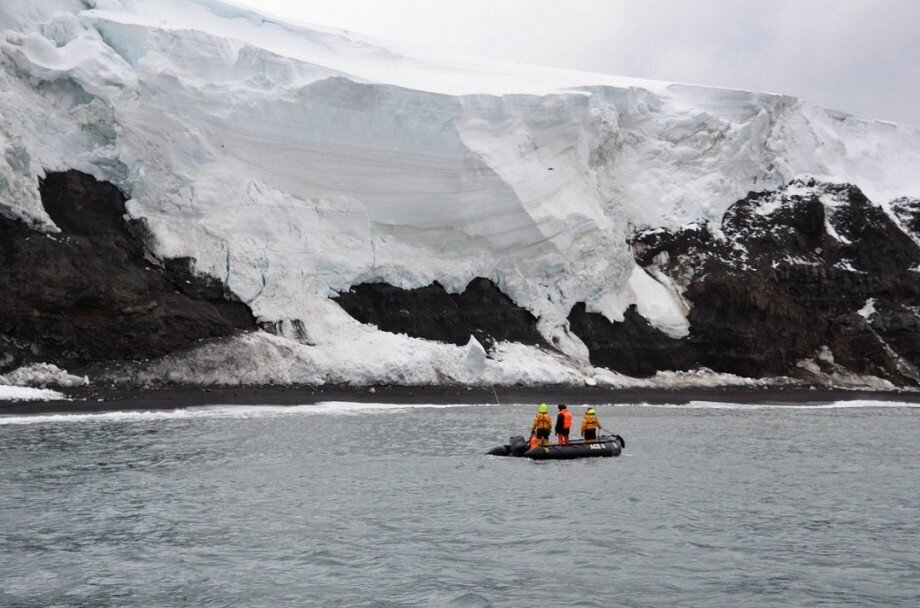
Bouvet Island close up
This fact was precisely the reason why Bouvet was discovered several times. The first to stumble upon the island was in 1739 by the French navigator Jean-Baptiste Bouvet de Lozier. He went in search of the mysterious “terra incognita,” that is, Antarctica, and instead discovered an island. But the insidious fog did not allow the explorer to understand that it was an island in front of him, and not a mainland, so he called the open land Cape of the Circumcision of the Lord and happily set off on his way back. In addition, the captain screwed up subsequent sailors - he incorrectly indicated the longitude of the “cape” he discovered.
James Cook, who sailed this route 40 years later, did not find any cape based on the coordinates. Another 35 years later, an English navigator discovered the island for the second time and named it after himself. So Cape of the Circumcision of the Lord became Lindsay Island. After some time, he changed his name again, becoming Liverpool in honor of the British Prime Minister Lord Liverpool. 
Bouvet Island on the map
And only in 1927 did the Norwegians land on the foggy icy land, build a small hut on it, hoist the Norwegian flag and give it a new name - Bouvet. In general, at that time the Norwegians were actively exploring the Antarctic territory, and the no-man’s islands they encountered declared theirs. Thus, the island of Peter I, discovered by the navigator Fadei Bellingshausen, fell into their net. On this occasion, a diplomatic scandal almost broke out between the USSR and Norway, but it did not take off.
Britain, which considered him one of its own, began to weakly quarrel with Norway through diplomatic notes. But later she abandoned this idea, giving up on the deserted island. This is how Bouvet remains a dependent Norwegian territory to this day.
Life on Bouvet Island
The only sign of civilization on the island is an automatic weather station, the main purpose of which is to record westerly winds. The fact is that Bouvet is located at a latitude of 54°, and among sailors of the past these places received the unflattering name “the furious fifties.” This is all due to the constant westerly winds, which practically do not encounter continental obstacles on their way. These air currents are very important for science because they influence how the planet's climate changes. 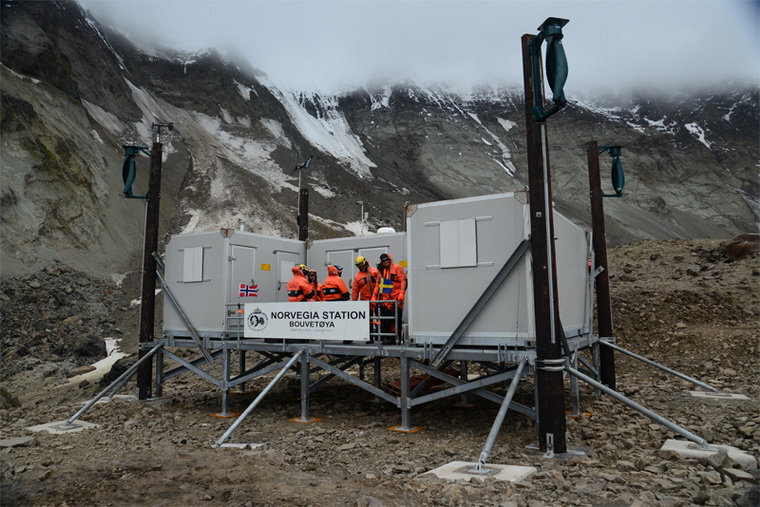
Automatic weather station on Bouvet
Sometimes Bouvet is visited by scientists who drill into the surface and extract ice core samples. Compressed ice is a kind of recording of the past on a tape cassette. The surface layer of the ocean is home to tiny diatoms that rise to the surface in the spray of water. The stronger the westerly winds, the more concentrated their layer will be in the resulting sample.
Applies to Bouvet excludingespecially by helicopter, since it is deprived of natural bays. No one stays there for long - they finish work and go back. As for the representatives of the animal and plant world, then Bouvet has nothing to boast about. Due to the average air temperature from plus 1 to minus 3 degrees, only mosses and lichens grow here, and then in limited quantities. There are no marine animals on the island; it rises up steep cliffs on three sides. Only in its western part there are small, gently sloping places where seals occasionally swim and where migratory birds sometimes stop. 
Norwegian scientists take an ice core sample/ © bbc.com
Mysteries of the Ice Island
It would seem that such a small (measuring only 9 by 6 kilometers) inhospitable ice island - well, what secrets could there be on it? But no. Available. As many as two. Bouvet came up with the first riddle in 1964. The crew of the Royal Navy icebreaker Protector discovered an abandoned boat on the sloping part of the island, which contained a lot of supplies, clothing, alcohol and things necessary for survival. At the same time, part of the cargo was neatly stacked on the shore and covered with stones. But there was no presence of people around. There were no wrecks in this part of the Atlantic, no ships or warships were lost. Where did the boat come from and where did the people go? Mystery. 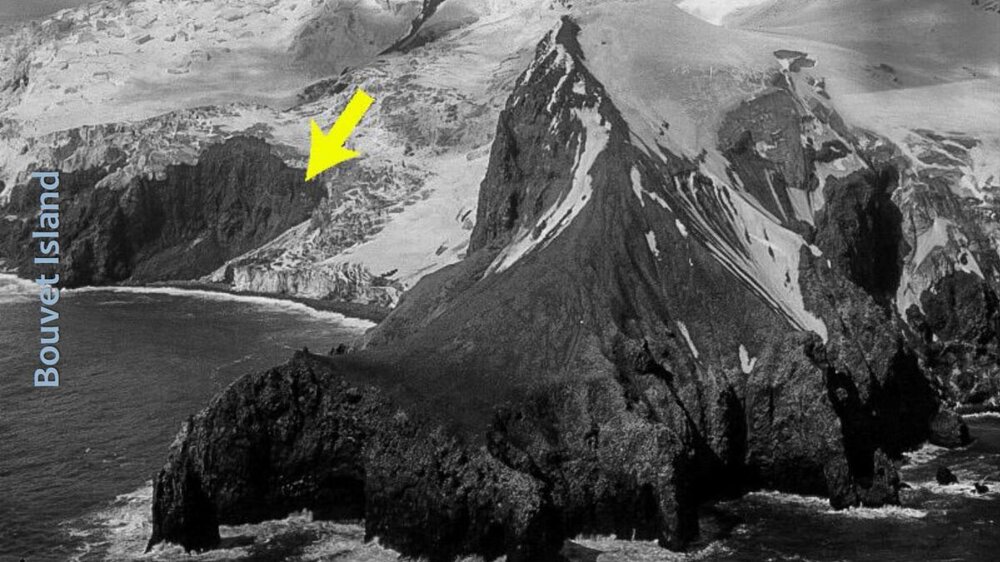
The place where the boat was found/ © snl.no
The second mysterious incident occurred in 1979. An American satellite recorded flashes in the area of the island, which usually accompany nuclear explosions. Did an atomic bomb explode on Bouvet? But no, not a single country in the world claimed responsibility, and subsequent examinations revealed no traces of a nuclear explosion. Then everything was attributed to space guests (meteorites), but their traces were also not found during a detailed flyby of the icy surface. What kind of outbreaks these were is still unknown to this day.
Inspired by a mysterious something, the scriptwriters of the film "Alien vs. Predator" made Bouvet an arena of interplanetary strife. The film takes place in a mysterious pyramid, whose thermal flashes were recorded by satellites from space. It ended up entirely under the island's ice cap.
In reality, thousand-year-old basalts are hidden under the Bouvet glaciers, framing the caldera of an ancient volcano. Nothing unusual or mysterious. “A beautiful and damn scary place” - this is how Norwegian researchers who visit it characterize the loneliest uninhabited island. Well, all that remains is to take their word for it.
